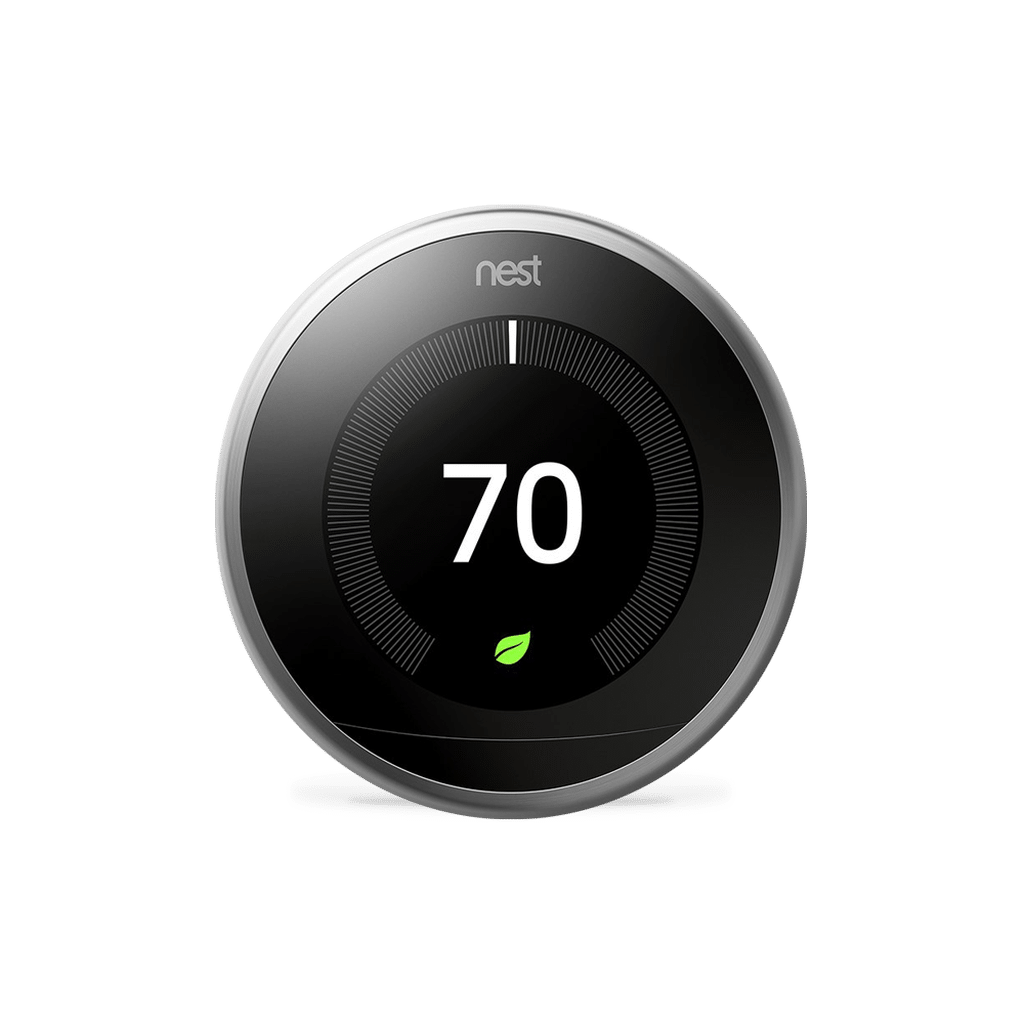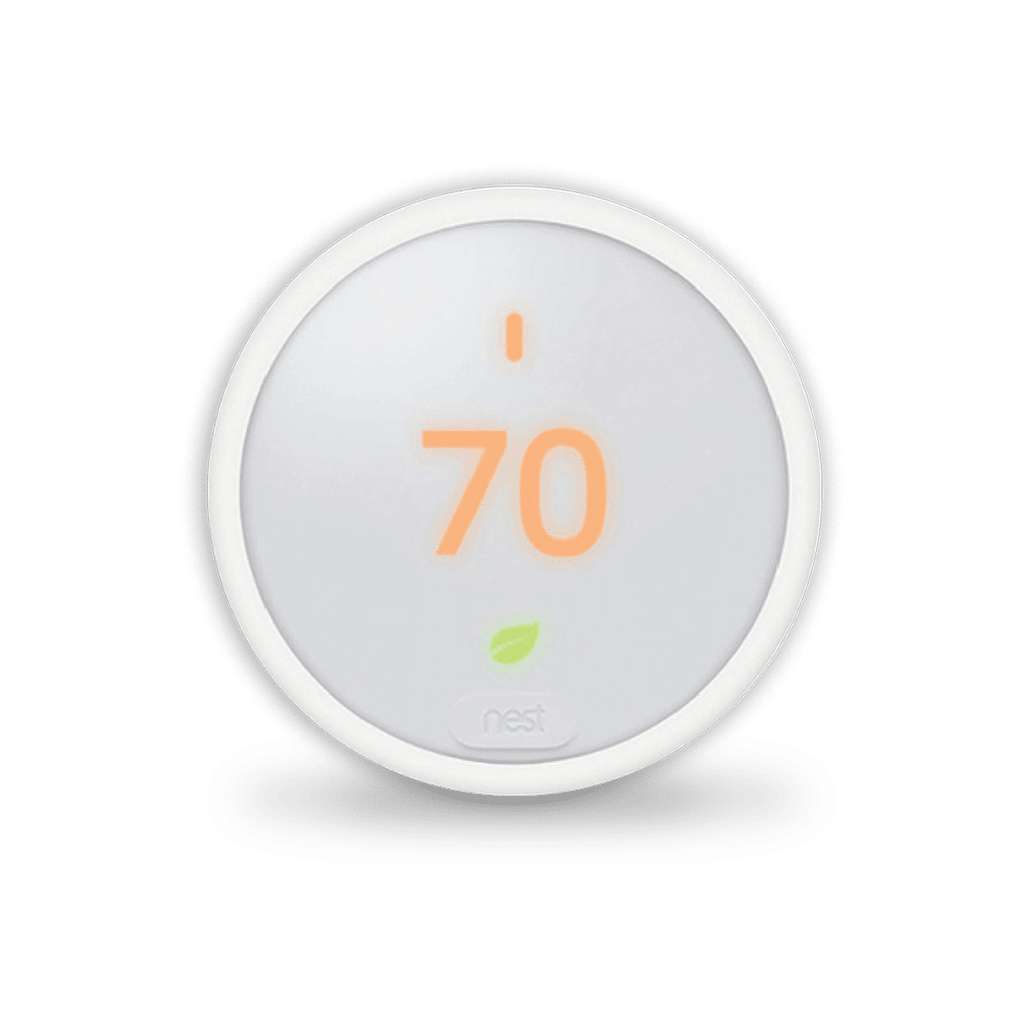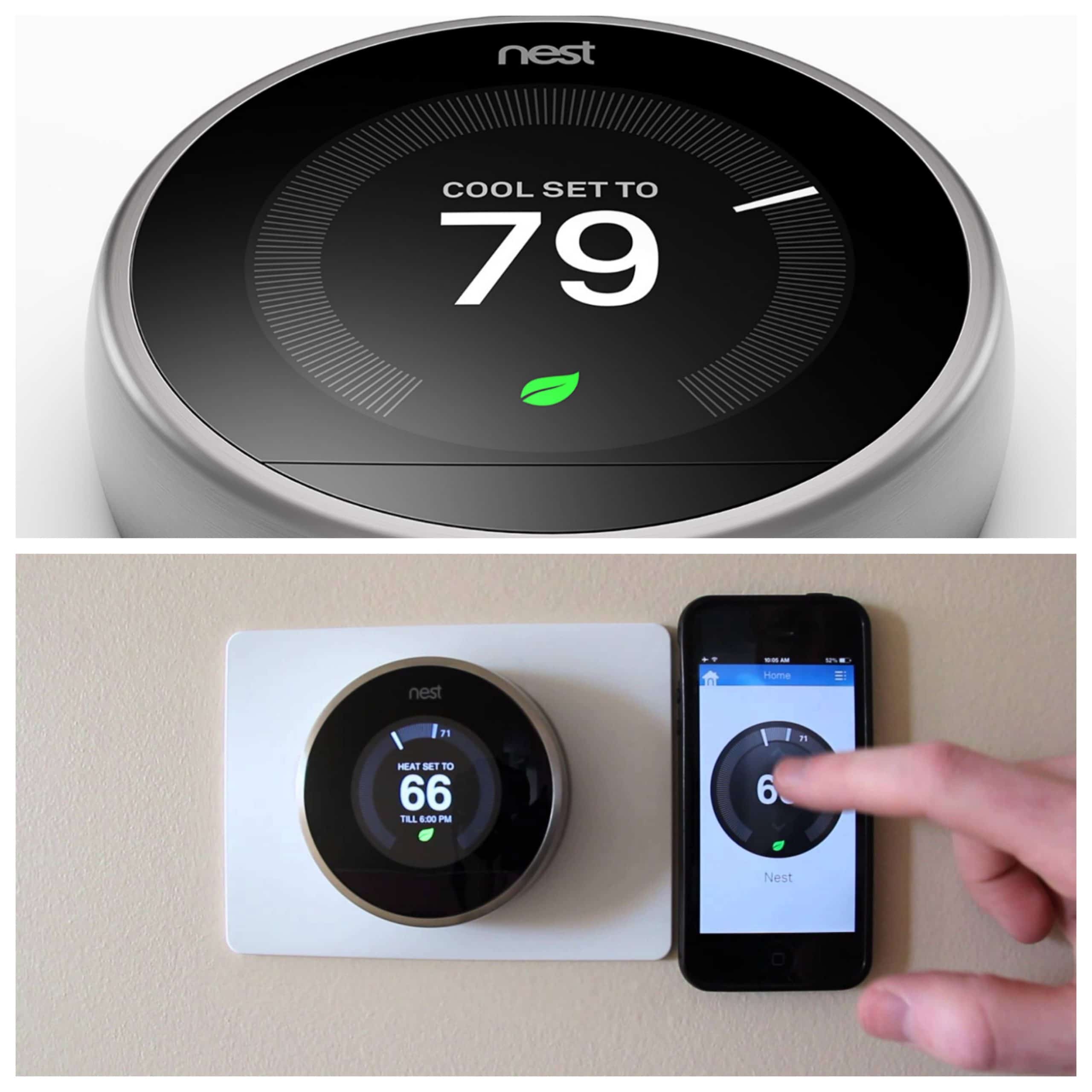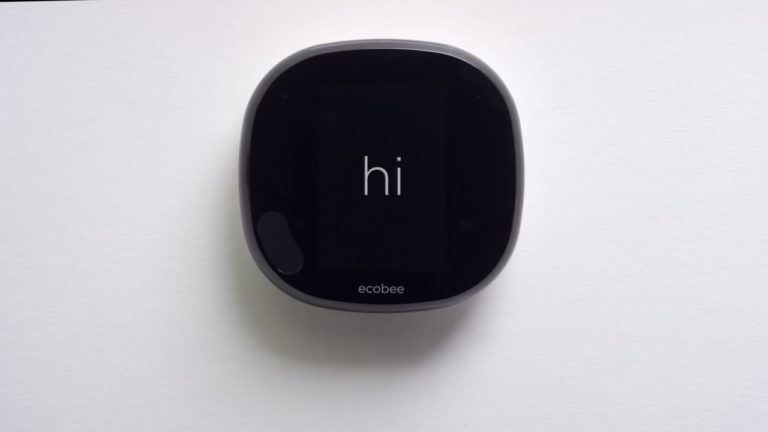Nest 2nd vs 3rd Generation: Which Smart Thermostat is the Best?

Smart thermostats are one of the best smart home accessories for home automation purposes. There are lots of thermostats on the market, and, as is the case with many consumer items, the manufacturers all claim to have the best products in their niche.
So, where to start looking if you want to choose a good smart home thermometer? Nest is a well-known and highly-rated manufacturer with a reputation for creating reliable smart thermostats.
What we need to discuss now is how 2nd generation Nest differs from the 3rd one, if it’s worth the upgrade or whether we should stick with the 2nd generation model.
To find out how how these two are different, we’ll compare and rate some of the most critical aspects of these smart thermostats. We’ll also present detailed charts that’ll help you make your final decision.
Table of Contents
- Nest 2nd vs 3rd Generation: Pros & Cons and Verdict
- Our Pick: Nest Thermostat 3rd Gen
- Bottom Line
Nest 2nd vs 3rd Generation: Pros & Cons and Verdict
Before we start directly comparing these two smart thermostats, I’d like to say a few things. Firstly, Nest is a company owned by Google, and for several years now, Nest has been manufacturing the most trusted, highest-rated and durable smart thermostats.
Today, Nest Learning Thermostats are the most advanced thermostats on the market, and it’ll be pretty accurate if we say that Nest is the industry-leading product and there’s no indication that the competition will topple it from the top spot any time soon.

Our Pick: Nest Thermostat 3rd Gen
The Nest Learning Thermostat is a smart thermostat that learns your schedule and programs itself to help save energy. You can control it from anywhere with the Nest app, and it works with Alexa and Google Assistant so you can adjust the temperature with your voice.
Installation Process
The first thing we need to talk about is the installation process of the Nest Learning Thermostat. Since we’re comparing the 2nd and the 3rd Generations, we can make this pretty short because both of these smart thermostats have the same installation processes.
Below, I’ll drop a video uploaded by Nest and if you want to know how to activate your thermostat, make sure to watch the guide.
If you’re concerned about the tools required for the installation, don’t worry. Nest Thermostat includes every tool you’re going to need to complete the setup.
If the vid posted above has left you with unanswered questions, use the user’s manual or reach out to the support team. Nest has an excellent customer care, and they provide some expert answers and tips.
Design
There’s not much to discuss here either since Nest Gen 2 and Gen 3 look almost identical. So the only thing I can say is that Nest Learning Thermostat has one of the best designs and it’s attractive.
Nest Learning Thermostat has neat dimensions, and it can fit any place in your home.
I’ve read a lot of reviews and met some people who already own Nest 2nd & 3rd Generations, and one thing the buyers have in common is that all of them are in love with Nest’s design.
Seriously, like 70% of the people I’ve talked to said that their guests continually mentioned how extraordinary the smart thermostat looks.
Also, the only difference you can find between Nest 2nd and 3rd Gen is the thermostat’s size. Nest 3rd Gen’s screen is 3.25 inches and the 2nd Gen is 2.75 inches. Plus, the profile of the 3rd Gen is a bit slimmer.

Interface
No more light talks here. The interface of Nest 2nd and 3rd Gen are entirely different. Nest 3rd Generation has noticeably improved its screen quality and size.
Frankly, the interface of Nest Learning Thermostat 3rd Generation is flawless. It’s clean, user-friendly and, most importantly, it learns your habits. Using Nest 3rd Generation is rather easy, and it only takes a few turns to change the temperature.
Nest 3rd Gen has a 480×480 screen with a higher resolution of 229 pixels per inch that improves readability and the overall picture.
Integrations
Not much has changed regarding integrations. Nest 2nd Gen can integrate with the same third-party devices as the Nest 3rd Gen.
Nest 3rd Generation still won’t support Apple HomeKit. The reason behind this is the fact that Google owns Nest and Google is a fierce competitor of Apple.
If you don’t know which products Nest integrates with, here’s a small list: Amazon Alexa, Skybell HD, Google Now, August Home, Philips Hue, Rheem, IFTTT, etc.

Alternative Pick: Nest Thermostat E
The Nest Thermostat E is a smart thermostat that turns itself down when you’re away. It helps you save energy and keep your home comfortable. You can control it from anywhere with the Nest app, and it works with Alexa and Google Assistant so you can adjust the temperature with your voice. And its frosted display is beautifully designed to blend right in.
Features
The next thing we should talk about is the features of Nest 2nd and 3rd Gen. Since Nest 3rd Generation is the latest product, it does offer some unique features that aren’t present in Nest 2nd Gen.
You’ll see these features in some other smart thermostats as well. Ecobee thermostats are an example. We’re talking about Nest thermostats today though!
3rd Generation Nest has something up its sleeve that might make you think about upgrading if you already own any of the previous Nest models.
Let’s start with the Farsight. When Nest detects some activity at home, it lights up to show you the time, temperature and weather. It’s a great feature that makes the Nest 3rd Gen more compatible with a modern smart home.
Other notable improvements of Nest 3rd Gen are:
- Time-to-Temperature – Nest learns how long it takes to heat or cool down your home.
- Automatic Adjustments – Nest monitors the weather outside and if there’s a sudden change, Nest will change its schedule and create a new heating/cooling plan to save as much energy as possible.
- More Sensors – Nest Learning Thermostat 3rd Gen now has better sensing abilities. I’ve seen some reports where people say that 2nd Generation Nest has weaker sensing abilities.
- Safety Alerts – If something goes out of hand and your home gets too hot or cold, Nest will alert you to check if everything’s okay.
- Furnace Heads Up – This feature looks for problems in your HVAC system.
- Sunblock – If the sun is directly affecting the home temperature, Nest 3rd Gen will notice this, and it’ll lower the heating power.
These are the base features that make Nest 3rd Generation different from the 2nd one. As you see, there are some noticeable improvements and Nest 3rd Gen has undoubtedly become a better, smarter, more reliable and capable smart thermostat.
3rd Generation Nest Learning Thermostat now has enhanced sensing abilities. Nest is now able to understand your home’s patterns better. It learns when your house gets hot or cold, and Nest flawlessly handles the job.
Advantages and Disadvantages
Let’s move on to the next topic and talk a little about the advantages and disadvantages of Nest 2nd and 3rd Generation.
To better understand how well Nest has improved compared to its predecessor models, we need to discuss the advantages and disadvantages of both thermostats.
Nest 2nd Generation Advantages
2nd generation Nest has a powerful energy saving system
Supports Google Now
OpenHAB integration
Good sensing abilities and integrations
Energy history & monthly reports
Nest 3rd Generation Advantages
Time-to-Temperature
Farsight
Enhanced sensing abilities & great integrations
Furnace Heads-Up
Supports Google Now
Energy history & monthly reports
Better screen resolution
These are pros of both thermostats. The chart provides a broad understanding of what to expect from each of these models.
Nest Thermostat 2nd and 3rd Generation Disadvantages
Now, that we know the strengths of 2nd and 3rd generation thermostats, it’s essential to know their shortcomings too:
Nest 2nd Generation Disadvantages
Weak sensing abilities
Doesn’t support HomeKit
Outdated, discontinued model
Nest 3rd Generation Disadavantages
Doesn’t support HomeKit
–
–
That’s pretty much everything we can say about the pros and cons of these two smart thermostats. As you see from the charts above, Nest 3rd Gen is a superior thermostat by offering better user experience and enhanced capabilities.
Nest 2nd vs 3rd Generation Thermostat
We’ve compared some of the most critical aspects of these smart thermostats, rated their designs, interface, talked about their features and some other exciting stuff.
What we can say now is that the Nest Learning Thermostat 3rd Generation obviously is a superior smart thermostat and it’s logical to think about an upgrade.
The question is whether we should hit the purchase button and get the 3rd Generation. Maybe it’s better to save some money and go for the 2nd one? Or why should we even upgrade? Does Nest 3rd Gen offer anything unique?
It is true that Nest 3rd Gen didn’t surprise its customers since it doesn’t have any unique features that create a significant change. Still, compared to the 2nd generation, the 3rd Gen Nest is way better. Just a single touch can make you understand the superiority of this smart thermostat.
If you already own the 2nd Gen, I know that you’ve been having some trouble with your smart thermostat. For example, Heat Pump Balance doesn’t work as it’s supposed to, it doesn’t run multistage systems as it should, energy reporting is not good, etc.
2nd Gen Nest has a lot of minor issues that’ll surely annoy you in the long-run. Fortunately, the third generation model has it all sorted out.
So is it worth the upgrade? Short answer: Yes.
The longer answer: It mostly depends on how satisfied you are with your current model and how badly you want the newest features. If you already own the 2nd Generation model, that’s like having 60% of the latest model.
Bottom Line
So let’s run through this once more. If you purchase the Nest 3rd Generation, you’ll get a better screen, a thermostat with better sensing abilities, unique features like Farsight, Heat Link and Furnace Heads Up.
On top of this, Nest 3rd Generation is a more flexible, better quality thermostat and offers more insights.
I own the 3rd Gen thermostat, and I’ve also had the 2nd Generation. I must say that I’m delighted that I chose to upgrade to the newest version.
Since I bought the Nest 3rd Generation, I’ve never faced a single issue. Today, Nest 3rd Gen is my trusted friend that keeps my home’s temperature under control and saves a lot of energy for me.
To sum this up, the only thing I can say is, “Go for it!”. Nest 3rd Generation is just great. Maybe Nest didn’t revolutionise the thermostat industry with its latest product, but the 3rd Generation Nest truly is a reliable thermostat that won’t disappoint its owner.

Our Pick: Nest Thermostat 3rd Gen
The Nest Learning Thermostat is a smart thermostat that learns your schedule and programs itself to help save energy. You can control it from anywhere with the Nest app, and it works with Alexa and Google Assistant so you can adjust the temperature with your voice.



Does 2nd gen support adding remote sensors
I have two heating and cooling systems in my house. Each is controlled by a Honeywell THX9000 stat with outdoor sensor providing outside temperature and humidity to each stat. Each stat controls a 2 stage heating and cooling heat-pump with a third stage emergency heat operation.When the outside temp reaches 10 degrees F, the stats shutdown the heat pumps and switch to emergency heat. Does NEST have a direct replacement for these stats? The stats are a nine wire system.
If I upgrade from my Nest 2nd Generation to the Nest 3rd Generation, is the existing wiring compatible? Meaning can I simply remove the 2nd Generation from the wall and install the 3rd Generation (set up obviously required)?
I have two separate HVAC systems in my house. Just added a Nest E to the gas furnace/AC system, but it is incompatible with our other low voltage heat pump system. If I get a 3rd gen Nest for my heat pump, will the Nest app let me monitor both?
Does it only work with certain furnaces and a.c. units?
Awesome post. Thank your for sharing such a nice article.